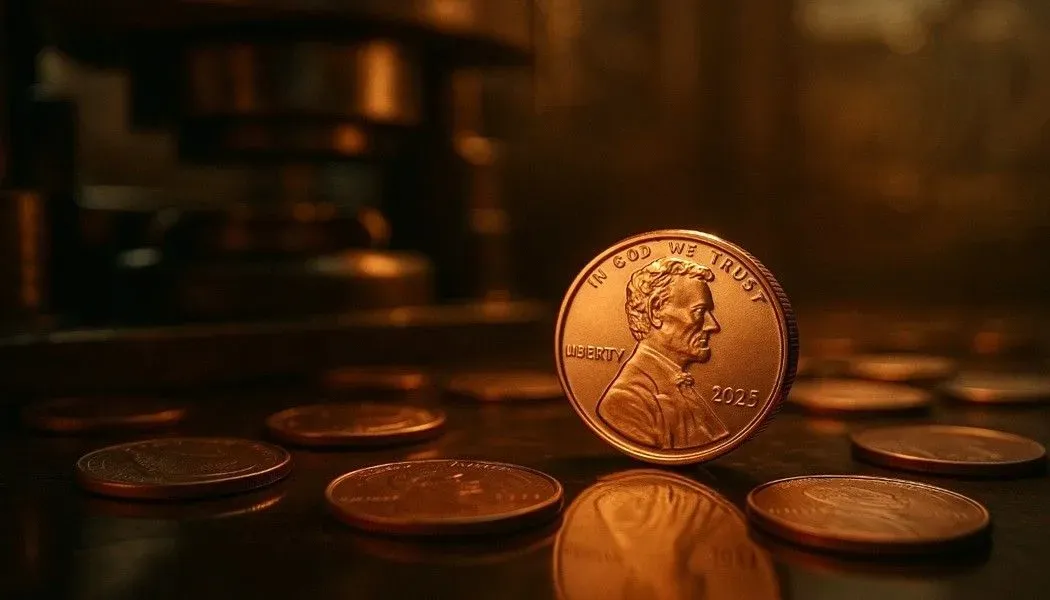
The Final Strike Marks the End of an Era
On November 12, 2025, the United States Mint officially closed one of the longest-running chapters in American coinage history with the ceremonial strike of the final circulating penny at its Philadelphia facility. The event, led by U.S. Treasurer Brandon Beach, marked the symbolic conclusion of a 232-year legacy that began with the Coinage Act of 1792, which first authorized the cent as the foundation of U.S. currency.
For more than two centuries, the penny served as an emblem of everyday commerce — a sound as familiar as pocket change in the American experience. Yet, rising production costs ultimately ended its journey. By 2025, each penny cost 3.69 cents to produce, making continued circulation economically unsustainable and prompting the Treasury to make a long-debated decision: end the penny’s production for good.
Why the Penny Was Retired
The decision to halt circulating penny production was driven by economic efficiency and changing consumer behavior. The U.S. Mint revealed that pennies accounted for 57% of all coins struck in fiscal year 2024, demanding vast manufacturing resources despite a steep decline in practical use.
In a world increasingly defined by digital payments and cashless transactions, the penny had become more symbolic than functional. At the same time, the rising cost of copper and zinc further widened the gap between face value and production expense. By discontinuing the coin, the Mint expects to save the government approximately $56 million annually, freeing capacity to focus on coins that remain essential for commerce.
While the penny will no longer be struck for circulation, it will remain legal tender, with an estimated 300 billion coins still circulating — ensuring it will stay in pockets and registers for many years to come.
From Metal to Digital: America’s Evolving Money
The retirement of the penny signifies more than the end of a coin — it represents a shift in how Americans think about money. Much as the U.S. once moved from silver coinage to modern clad compositions, the nation is now transitioning from physical change to digital convenience.
This evolution mirrors broader economic transformation. Contactless payments, mobile banking, and cryptocurrency have accelerated the digitization of currency, reshaping both commerce and collecting. For historians and numismatists, the penny’s departure marks a profound milestone — a reminder that even as technology advances, physical money remains a tangible link to national heritage.
Collector Opportunity: The Rise of the Final-Year Penny
For coin collectors, the end of the penny presents a rare numismatic opportunity. Each time a denomination retires, public fascination follows — and history suggests demand will rise sharply. Collectors are already turning attention toward classic Lincoln designs, from the Wheat Penny (1909–1958) to the Lincoln Memorial Cent (1959–2008), and particularly the final-year 2025 issues that mark the official close of the series.
High-grade examples, early key dates like the 1909-S VDB, and famous errors such as the 1955 Doubled Die are expected to see renewed interest. Even modern copper-zinc transition years like 1982 may gain attention as collectors seek tangible pieces of this turning point in U.S. minting history. With each coin, the story of the American penny — from copper to zinc — continues to inspire both nostalgia and curiosity.
Economic Insight: Lessons from the End of the Penny
The penny’s discontinuation underscores a timeless economic reality: when production costs exceed face value, monetary sustainability falters. This concept resonates deeply with investors and collectors alike.
Precious metals — including gold, silver, platinum, and palladium — share a similar principle, where intrinsic value influences minting decisions and long-term demand. The penny’s story highlights how commodity prices, from copper to gold, shape the future of money itself. As investors watch fluctuations in the spot price of silver and gold, they are reminded that metal — even in its smallest form — remains the backbone of tangible value in a digital economy.
A New Era for Penny Collecting
The end of the penny’s production marks not its disappearance, but its rebirth as a collectible. When a denomination concludes, interest from both new and seasoned numismatists tends to surge — transforming what was once pocket change into a piece of history.
Collectors are expected to pursue circulated and mint-state Lincoln cents alike, with growing focus on the artistry, rarity, and symbolism behind America’s most familiar coin. From early Wheat Pennies to final-year issues, the cent will live on as a cornerstone of American numismatic identity — an enduring reminder that even the smallest denomination can carry immense historical weight.
A Legacy Minted in Copper
The ceremonial striking of the final penny closes a monumental chapter in American minting, but its story continues in every jar, album, and collection. From the 1793 Flowing Hair Cent to the modern Lincoln design, the penny has chronicled more than two centuries of U.S. history — reflecting a nation’s evolution in both economy and spirit.
Though the presses have fallen silent, the one-cent coin remains a cultural and numismatic icon — a bridge between America’s physical money and its digital future. For collectors and investors alike, its legacy endures as a small but powerful reminder of the value found not only in metal, but in memory.
Related reading you may find interesting:
2025 Omega Pennies: The Final Evolution of the U.S. Cent
Top 50 Most Valuable Lincoln Wheat Cents: A Collector's Guide
